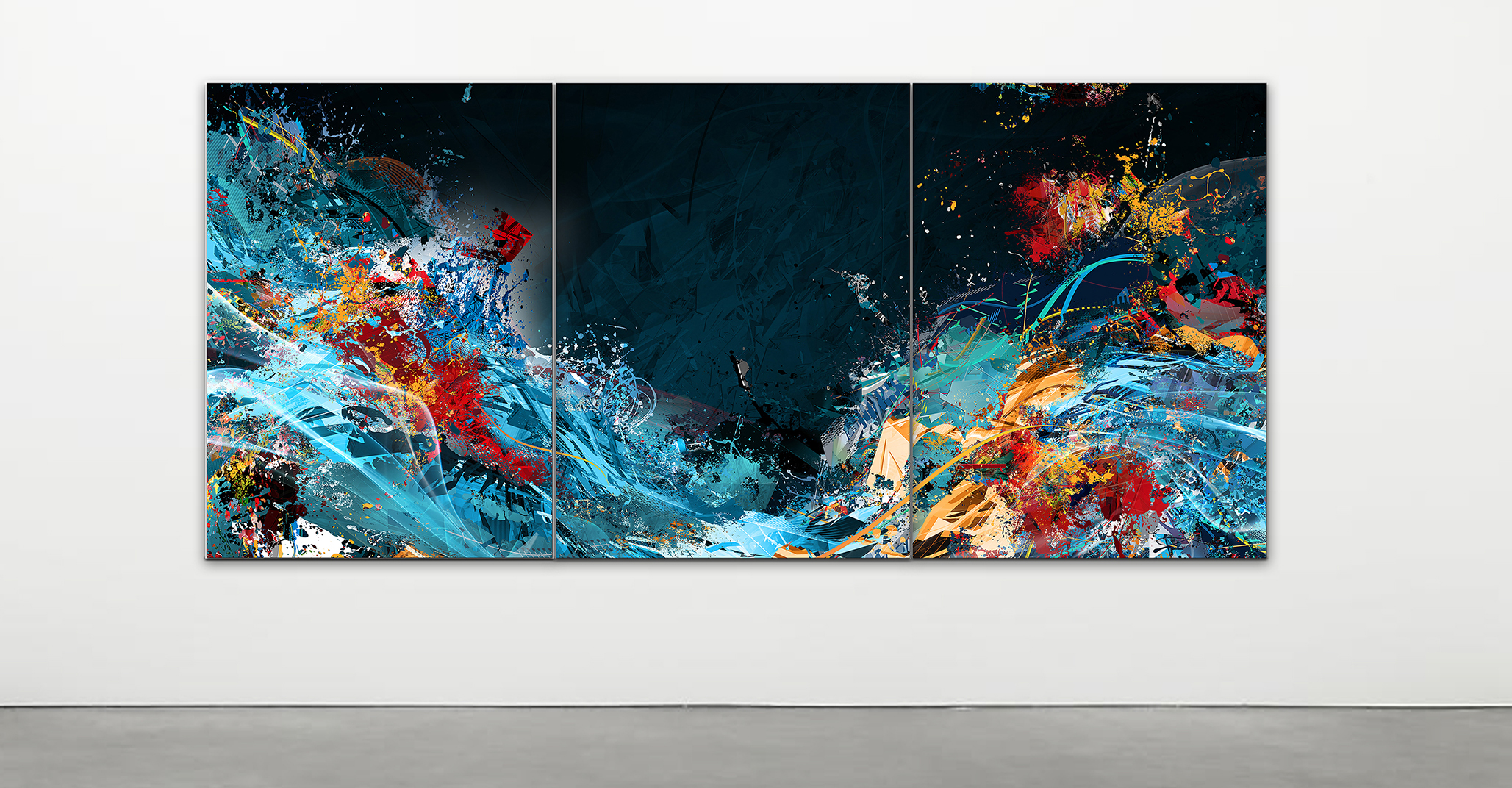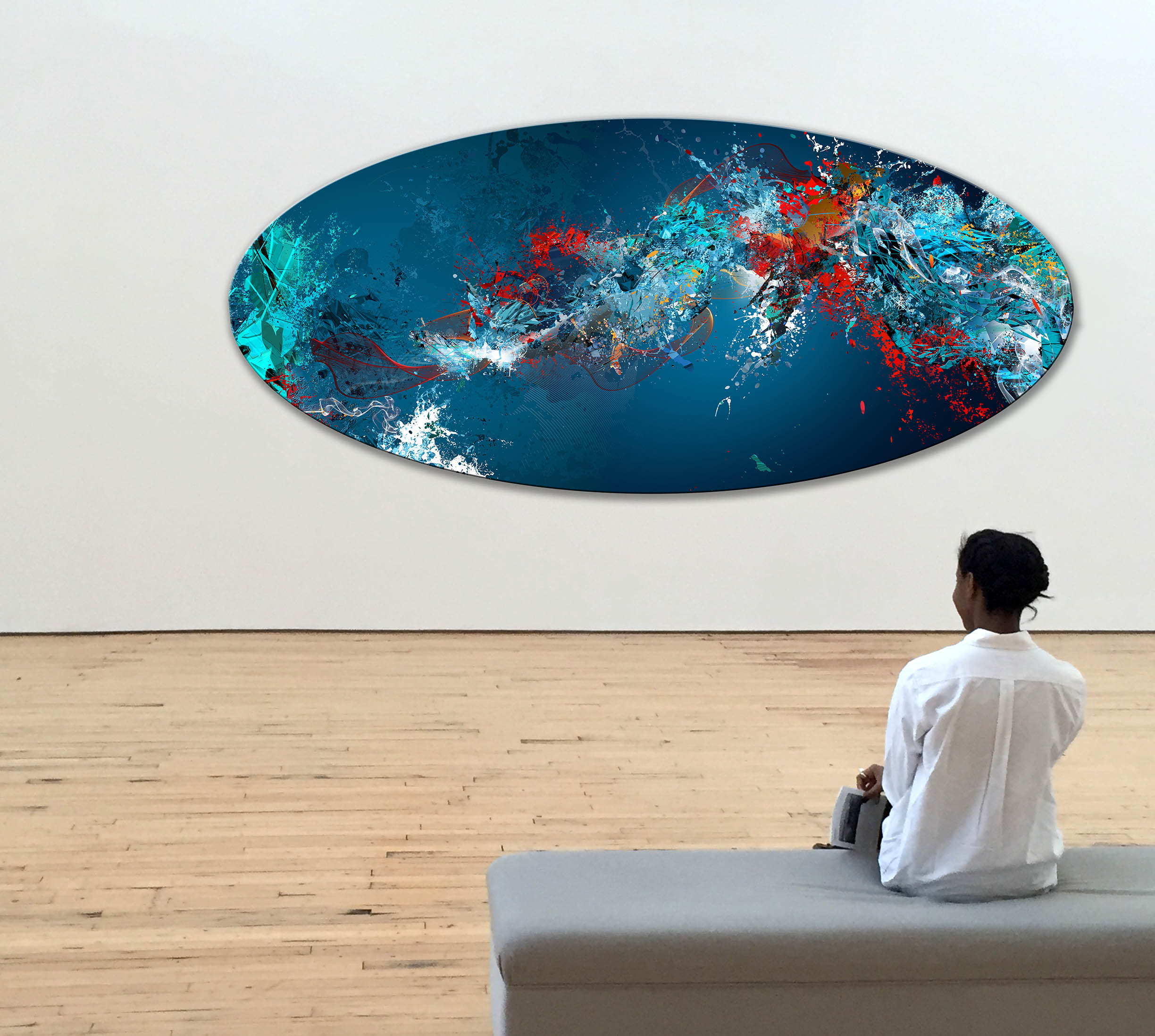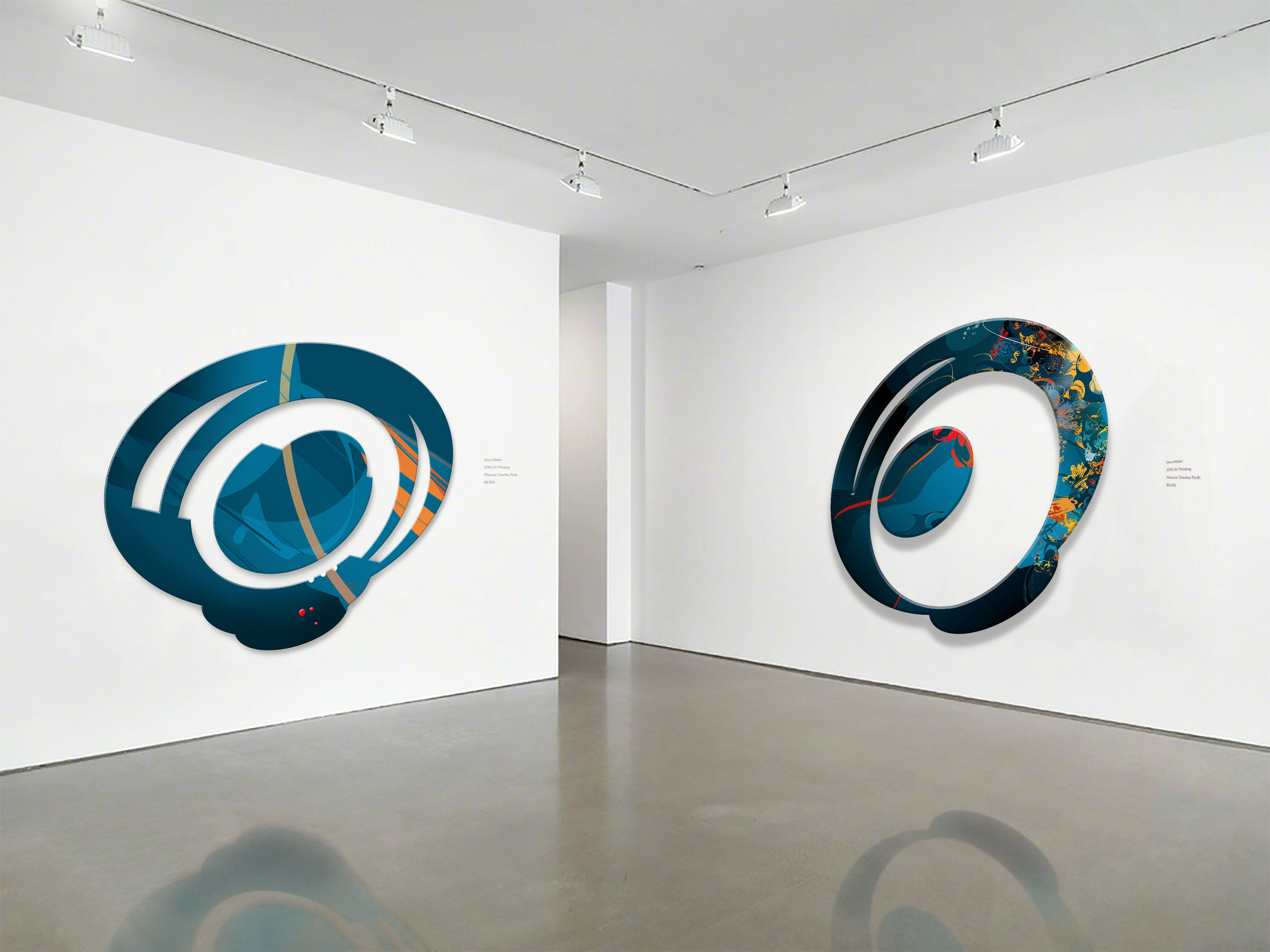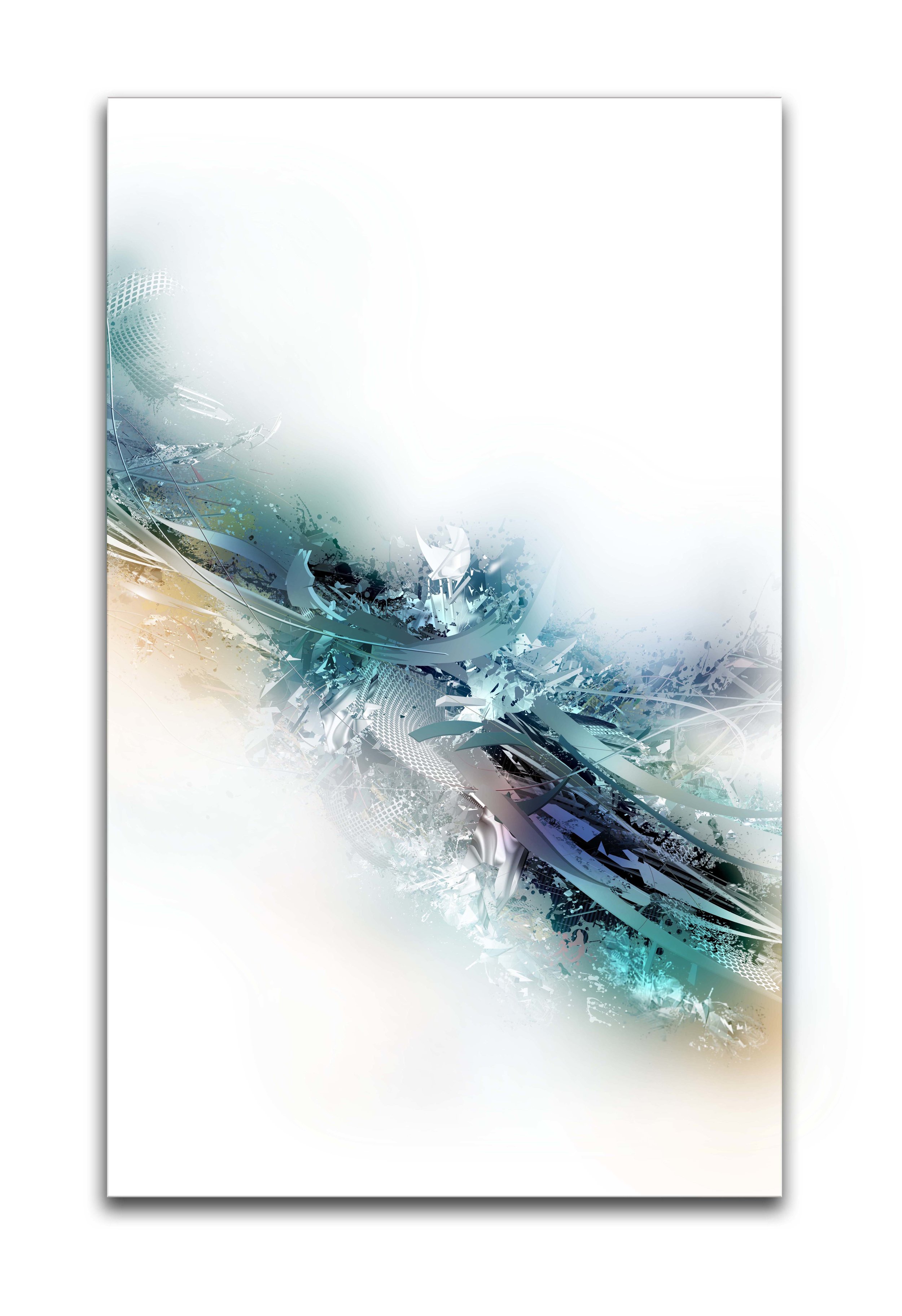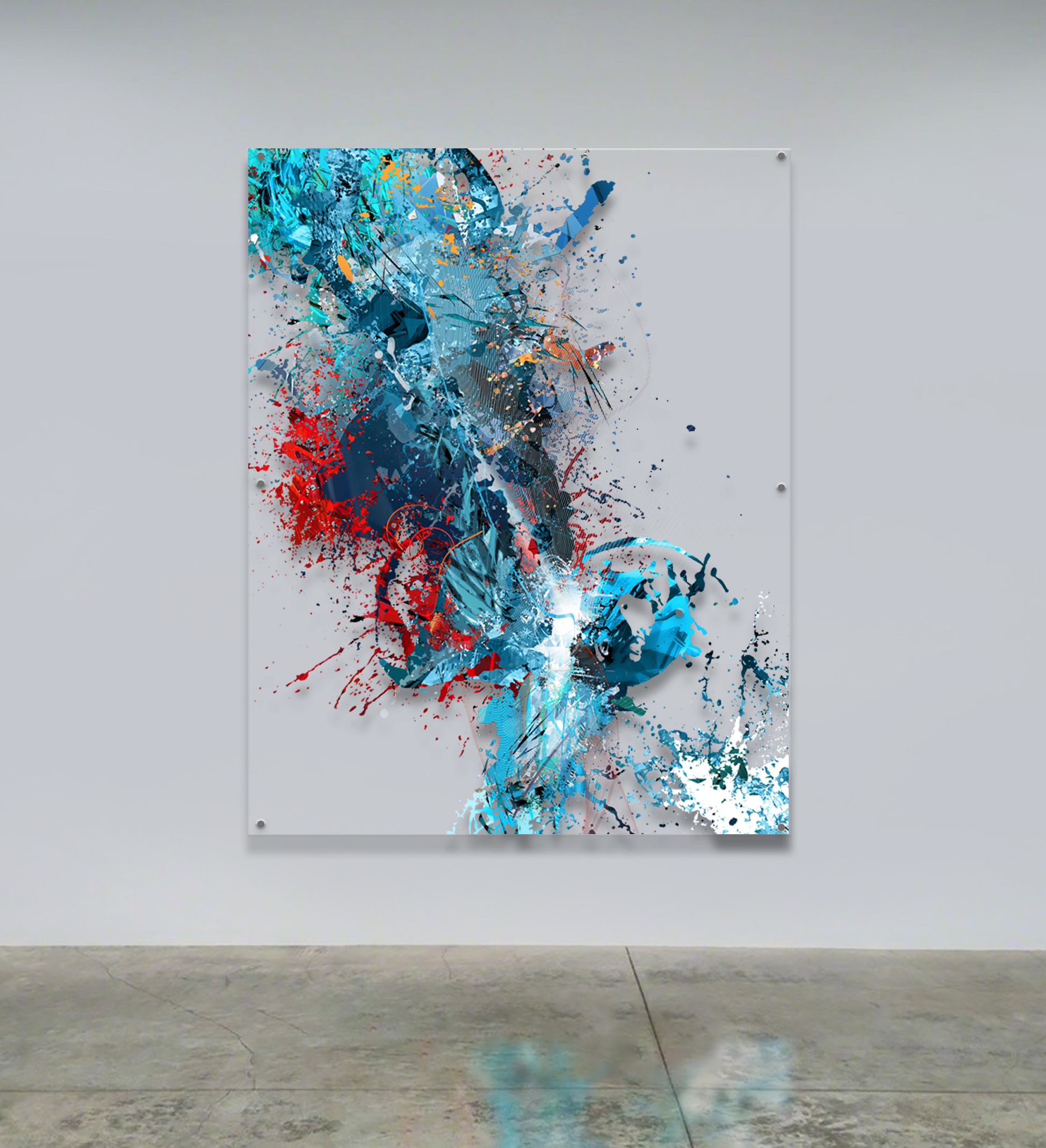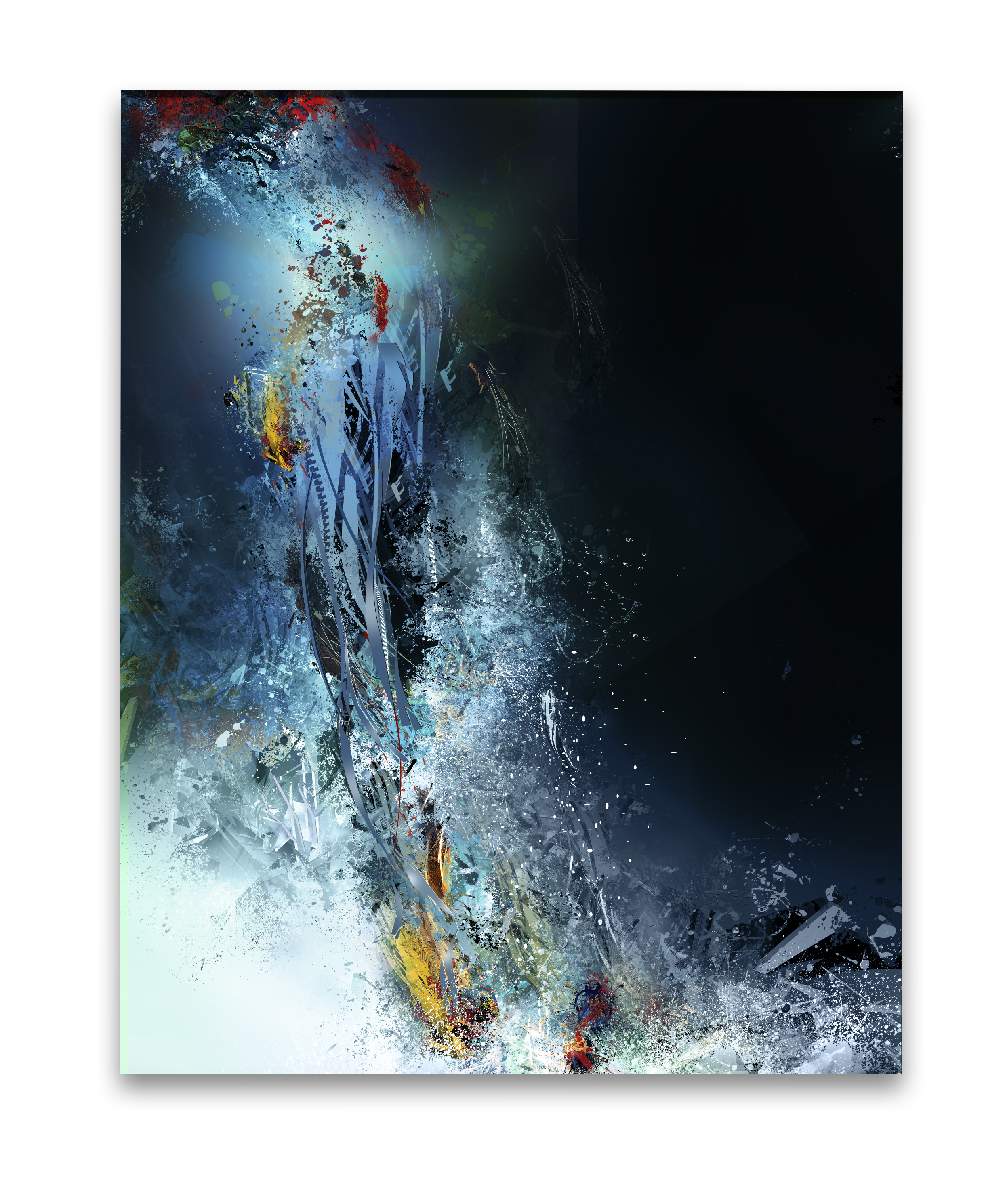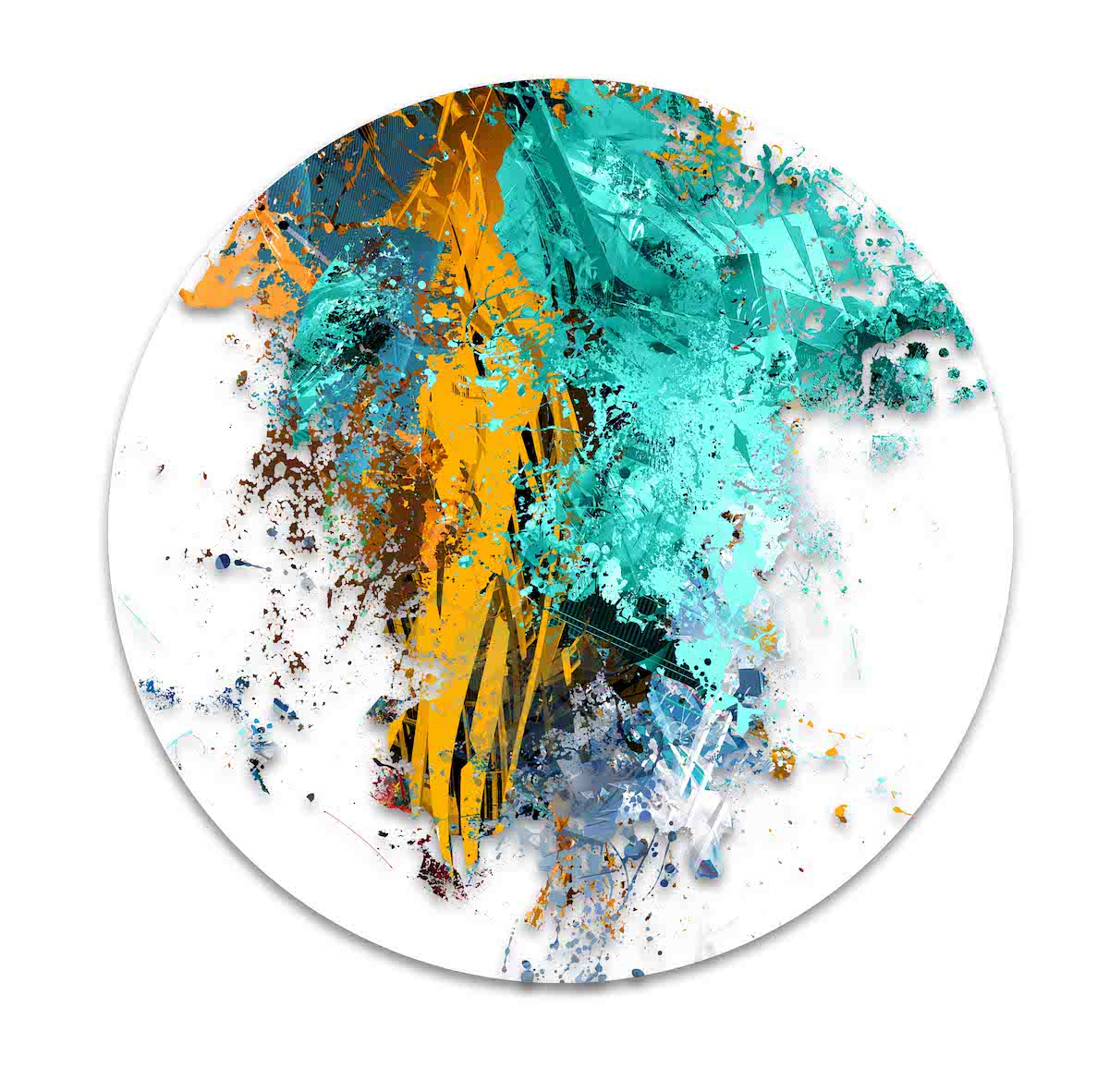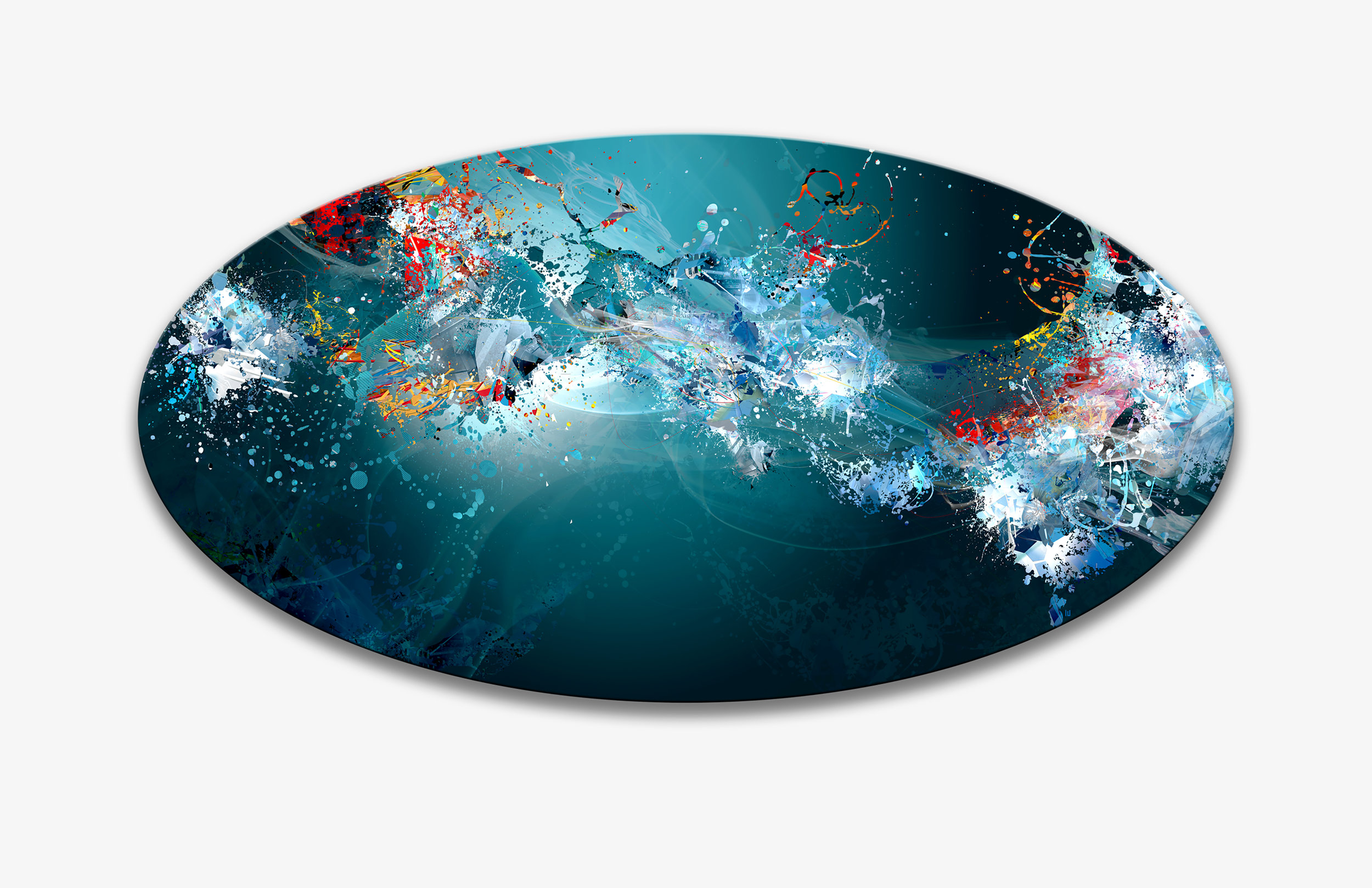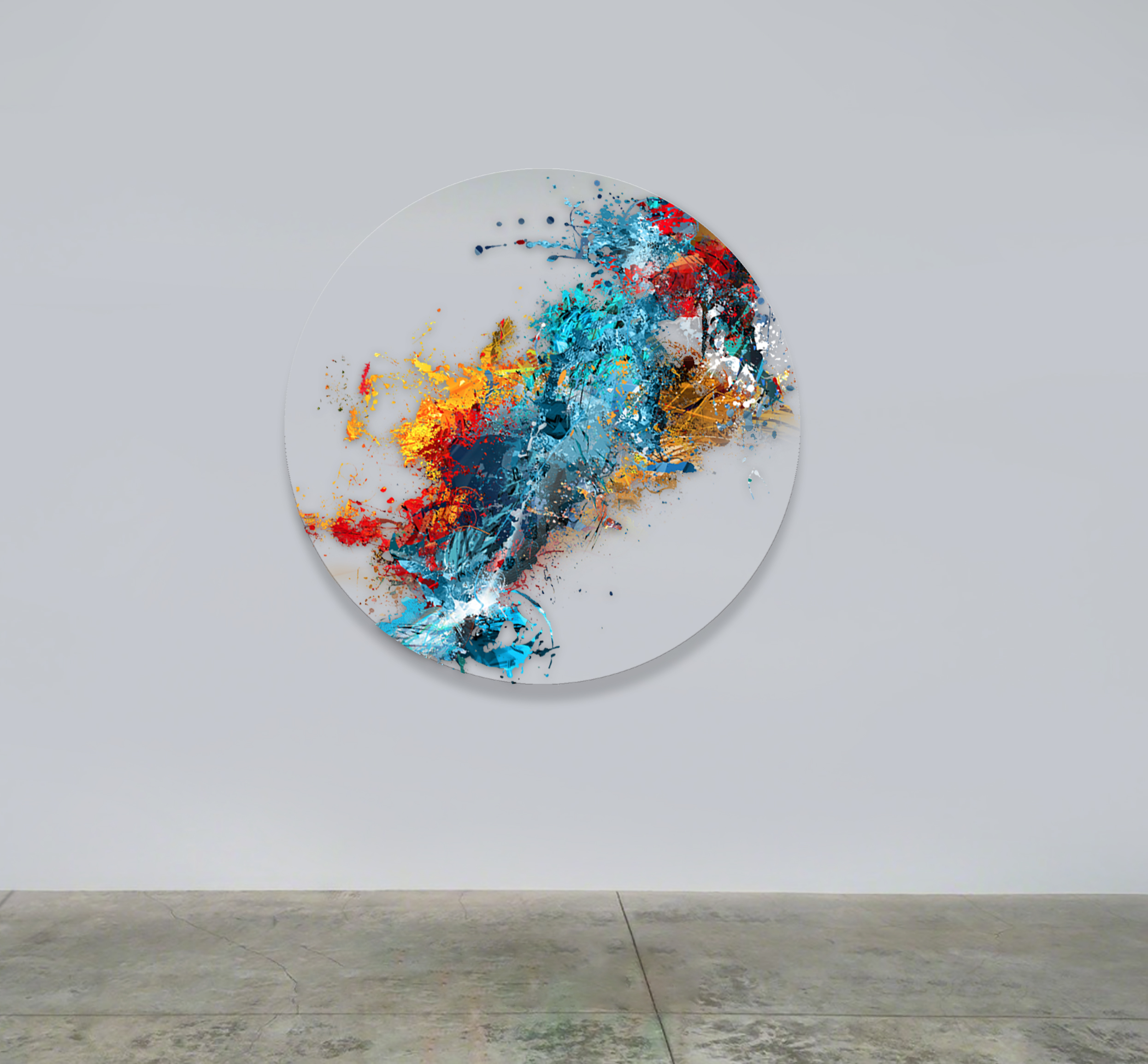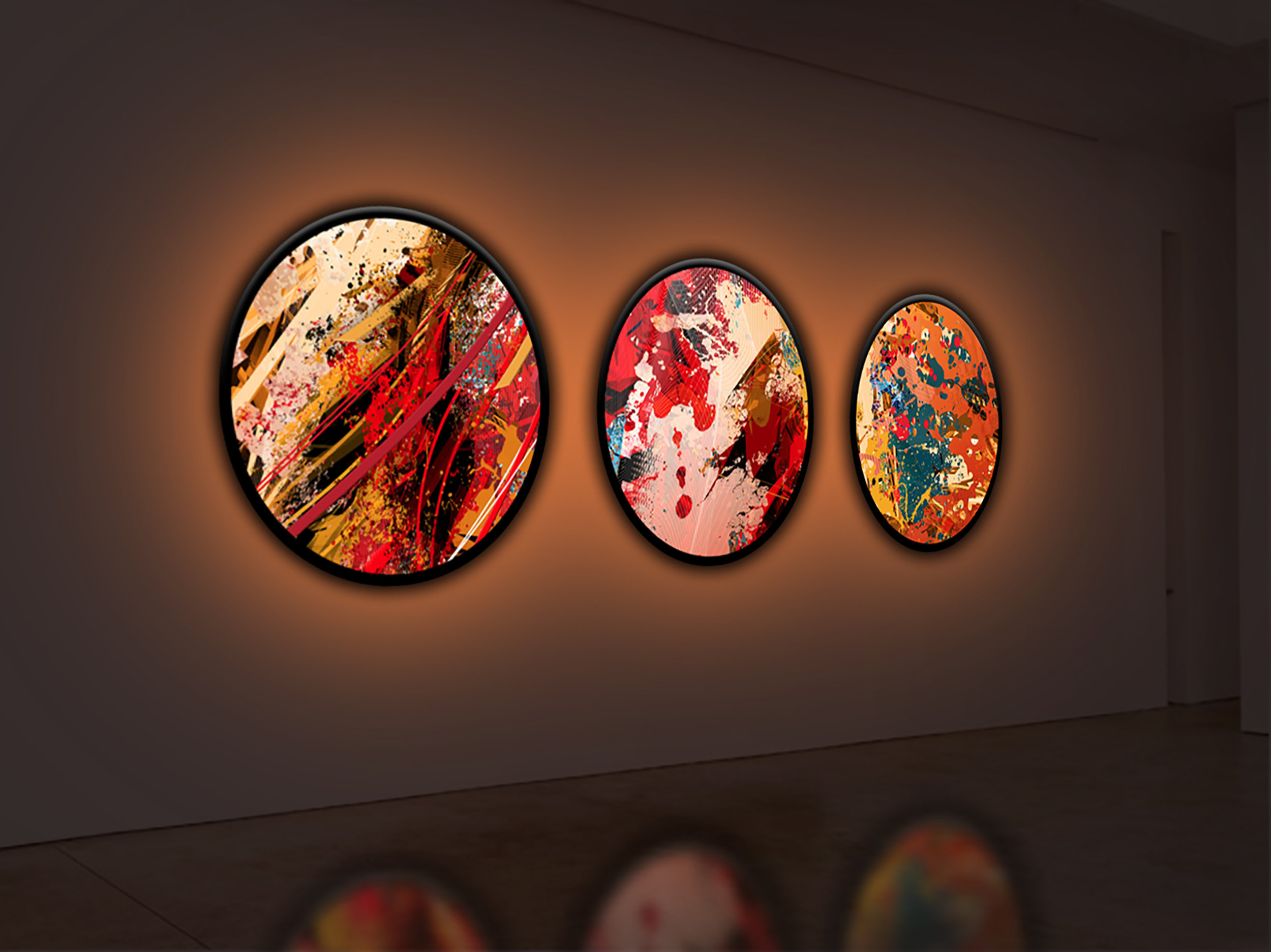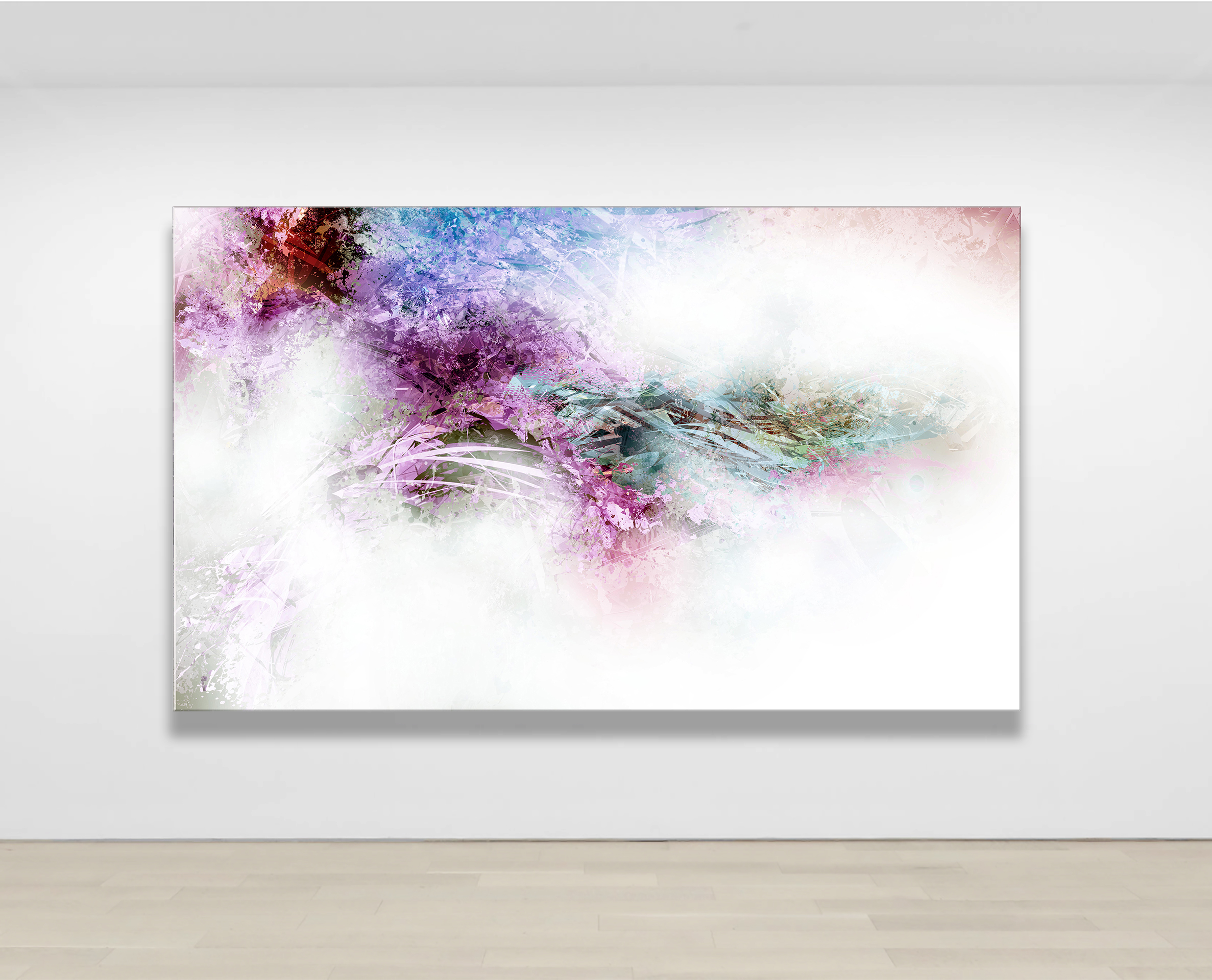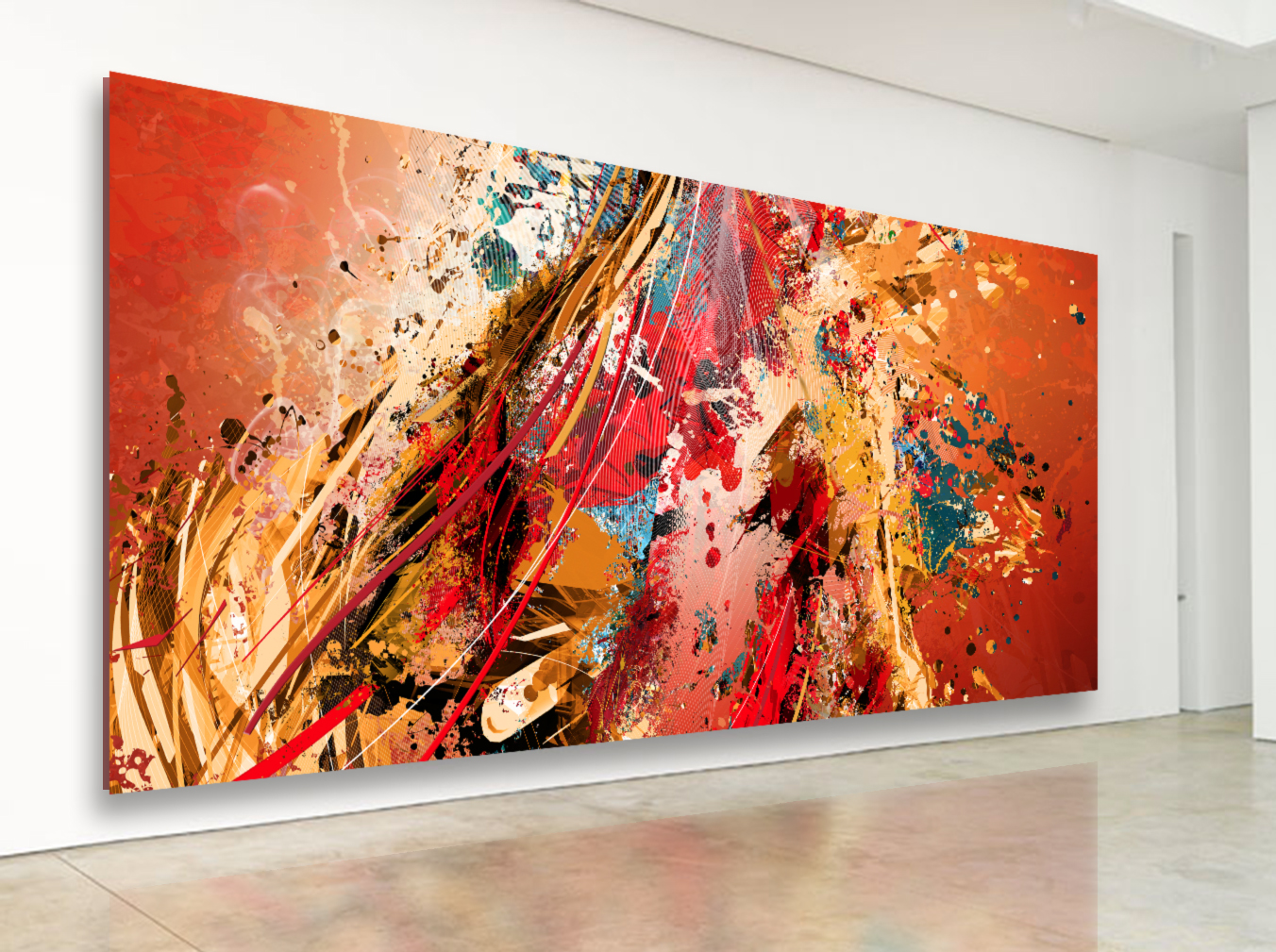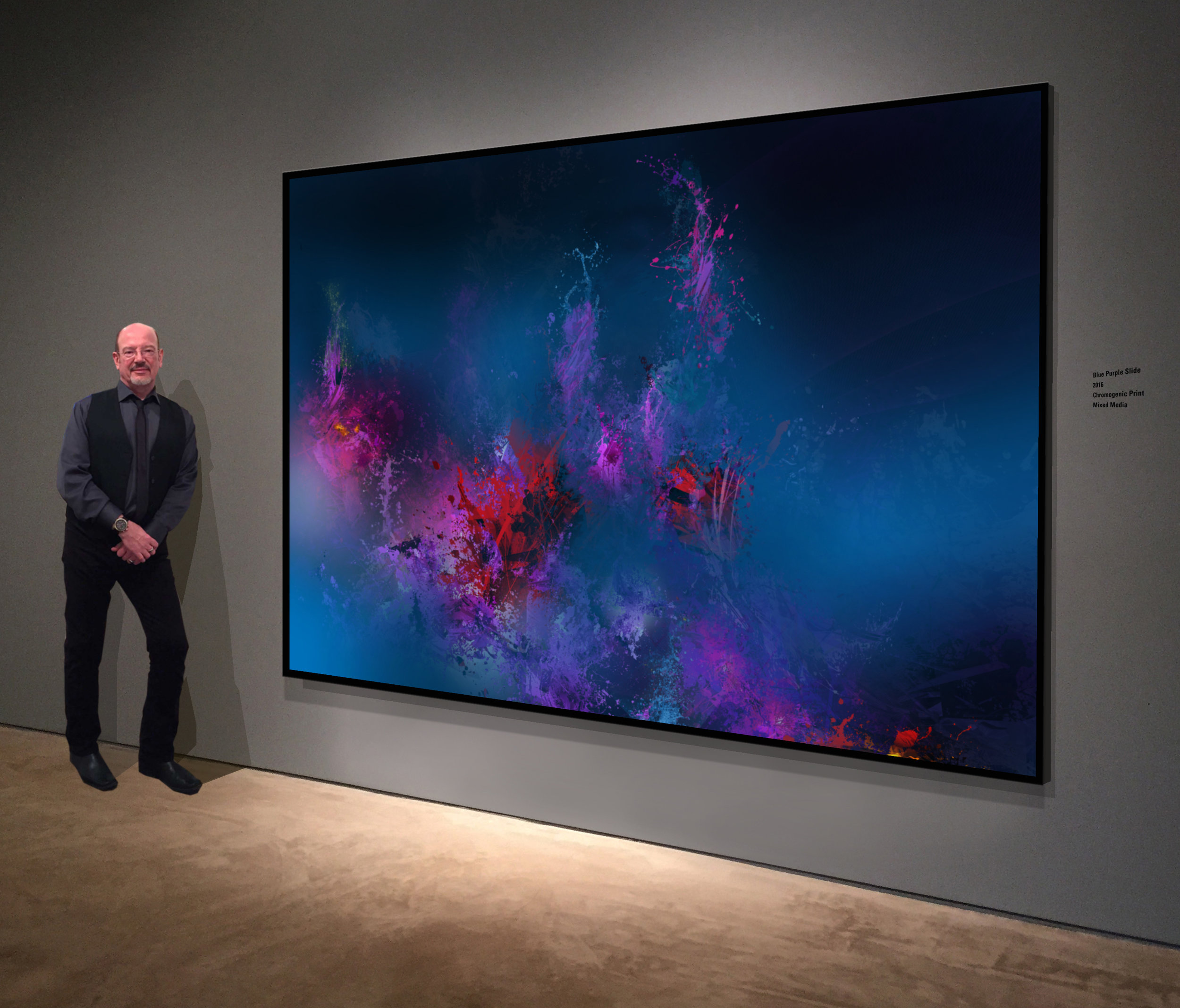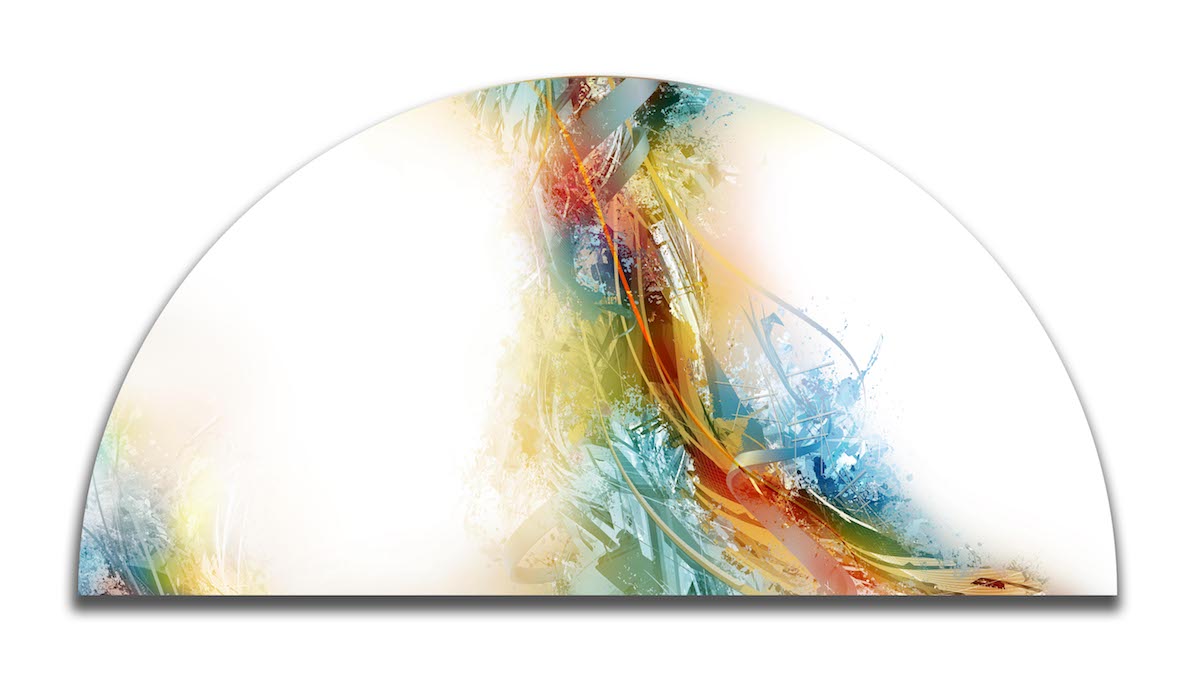Interview with Wayne Charles Roth
Artist, Wayne Charles Roth is part of the changing landscape in the art world. His work represents the blurring of the traditional art world boundaries substituting technology and new materials for traditional paint, brushes and canvas. Wayne was born in Rochester New York. He graduated with a Masters Degree in Fine Art from Rochester Institute of Technology. Educated as a classical painter, photographer and designer he became interested in computer technology in the 90’s. He felt that technology allowed him to create art that was a truer reflection and expression of the time we live in. Wayne’s art is in many private collections and he exhibits in the United States and Europe regularly. He recently completed multiple commissions for an art collector in the UK and is currently working on a new series that is sculptural and adds a new dimension to his work. He has also created “art” pianos and furniture for select clients and collectors. He is represented by three gallery’s and is currently showing at the World Art Dubai fair. He wants his work to appeal to viewers on different levels, from sophisticated art collectors to everyday art lovers. Wayne wants his viewers to be surprised and dazzled by what they are experiencing when they experience his art. By using today’s technology he can create art that truly reflects how we live today
Please give us an overview of your background and career, and how you arrived at becoming a Digital artist and painter?
After earning my MFA from the Rochester Institute of Technology I moved to New York City to pursue a career in the arts. To support myself in the early years I worked for several major design firms while trying to paint whenever possible.
Over the last several decades I worked as a designer, photographer, illustrator and business consultant while continuing to pursue painting. The most rewarding aspect of all my careers was my ability to support myself and my family through my creativity.
The transition from the commercial world to the fine art world was very natural for me. Over the last decade more of my commercial clients asked for personal work. These growing requests allowed me to focus more on fine art. I had the good fortune to have several major art collectors become supporters of my art. They helped to open many doors in the art world. My digital painting and fine art has been exhibited in galleries, museums and art shows in the United States and Europe. I am currently represented by 3 galleries.
Why did you decide to use technology to create art rather than more conventional artist tools?
I was trained as a classical painter and continued to paint with oils into the 90’s. At that time computers were becoming commonplace and an integral part of our everyday lives. As many artists before me I began to look at the new tools available and was curious how to use them to create art. It started as an experiment but I found that using technology allowed me to create statements that reflected our time and place in a manner that felt I was more authentic.
What is it like to be a digital artist in todays art world?
The beginning stages were very difficult. Gallerists, curators and collectors were reluctant to embrace digital painting as fine art. There were many misconceptions about digital art that I had to overcome to have my work considered to be fine art. I spent a lot of my energy educating people about my process and demonstrating how similar it is to my old form of creation. Once people understood that technology was only a tool, like brushes and oil paint, did my work become more readily adopted.
Can you describe your creative process, how does it differ from painting or drawing?
My process is strikingly similar to when I painted with oils. It is still about creating compelling art that surprises and delights the viewer. I always start with a concept and emotion that I want to communicate. I still draw, but with a stylus instead of a pencil. The biggest difference is my need to have a finished image in my mind before beginning. The process of using a computer and software is less linear and requires multiple steps before I start to create the finished image. Similar to making a movie that you shoot out of sequence, so I have to have a clear idea of where I’m heading. The biggest difference between conventional painting and digital painting is when I complete a digital painting, I still have several weeks of production work before it can hang on a wall.
How do you produce your art? What process(s) do you use?
The beautiful thing about technology it’s always evolving. These changes present new opportunities to use the technology in unique ways. For me to remain current I have to continually explore new techniques and figure out if they can help me to communicate my vision. Additionally, everything has to be archival so collectors have confidence that my work will be around in 100 years. I use many different techniques to produce my final art: metallic chromogenic prints face mounted to acrylic, UV printing, LED and fiber optic panels, laser cutting and imprinting in glass. All these processes allow me to use the most appropriate method to communicate my vision and to solve weight, size and environmental issues.
How do people respond to your art? and what surprises you the most about their viewpoint?
The question I am asked the most is ”how did you create this? I have never seen anything like it before.” As an artist this is the best question I get asked. It means that people find my art original and fresh.
I’m also delighted by what people see in my work that I never intended. My art is full of power, color and energy and yet, many collectors are enamored with the detail and complexity of the work, focusing on small areas and studying the detail. One of my greatest pleasures is the emails or texts I receive from strangers viewing my work. They actually take the time to reach out and express how my work has touched them. This is the greatest compliment I could receive, and always inspires me to be a better artist.
How long does it take to produce one piece?
It varies, every piece is different. on average I will spend 3-5 weeks creating the finished art in the computer and another 2-3 weeks producing the final piece. The critical factor is how many hand drawn elements will I need for a particular piece. Once I have drawn all the elements I import them into a 3D program for color, lighting and texture. This part of the work can take several weeks.
How much time do you spend marketing and promoting your work vs actually creating your art?
I have an advantage over many artists in that I came out of the business world. I know how to market and promote my art to perspective buyers. That skill has enabled me to move my career forward much faster than a lot of other artists. I sell work all over the world and have representation or a presence in most major markets. Though my representatives do a great job, it is important that any artist, myself included, takes control of your own destiny and market yourself aggressively. I spend almost 40% of my time on the promotion or marketing of my work. The internet is a strong tool for connecting with potential buyers and it allows you to reach geographic areas that would have been impossible years ago. My advice to all artists is to take control of your own marketing and promotional efforts in conjunction with your gallery. Working together can produce amazing results and help you to realize your dreams must faster.
Where do you reach potential art buyers? and how important are on-line sales vs Gallery representation?
I made a decision years ago to make my work available to anyone who wanted it. In other words, I almost rarely say no to a potential buyer. Art lovers are everywhere, so I try to reach out every way possible. I was lucky enough to have several important collectors purchase my work when I was in the early stages of my career. These people helped promote me with other art lovers and collectors. These individuals are very important to me and I’m so grateful to each person who has helped me along the way. Most of the new collectors I meet are through recommendations or because of my strong presence online.
I have come to find that there are three main prongs to successfully obtaining buyers. 1. Gallery representation – this is very important because it legitimizes an artist to potential buyers. Buyers feel safer making a purchase from a dealer or knowing you have one. 2. Online sales - there are many online galleries and boutiques that reach large audiences. This helps to introduce me to potential buyers and gets my name out there. 3. Art Fairs - these are critical to reaching a lot of buyers in a short period of time. Art Fairs are not democratic and and without a gallery or dealer you cannot show your work. I think that it is very important to have multiple levels of presence to succeed in the art world. Some levels you can do yourself and others you need help.
I do my best to leverage all three of these techniques to get my art in the hands and homes of as many buyers as possible.
What art plans do you have for 2019? Any new directions?
I’m currently working on a new series that is more sculptural and allows me to use irregular shapes and forms to communicate emotion and energy. I have been working on this series for years, but the latest technologies have allowed me to explore this concept without restrictions.
Art Fairs are another major focus and one of my dealers will be taking my work to World Art Dubai and Miami Basel in 2019.
I continue to pursue private and corporate commissions. Over the last few years this has become a a strong component to my success and I am working on expanding my audience.
Overall, I just want to create compelling and unique art!
What one thought would you like your viewers to take away from your art?
I want my art to appeal to viewers on different levels, from sophisticated art collectors to everyday art lovers. My objective is to keep getting better which should translate to better art. I’m hoping my viewers are surprised and dazzled by what they are experiencing. My objective is to create art that truly reflects today and how we live.


